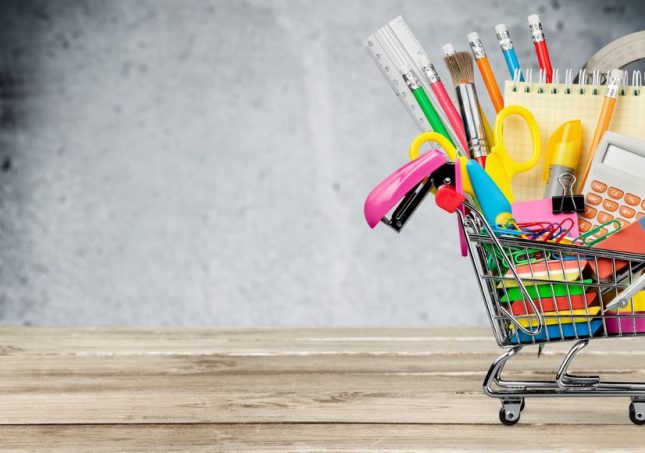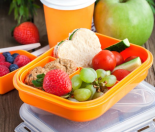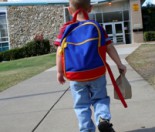Back to school. Time to dig out the school stationery lists but what does it all mean? Read our School Stationery article for a guide to what is what.
For most parents, reading a school stationery list is like reading a foreign language. If they want a Maths book, why don’t they just say a Maths book?…Right? Well…it’s not quite that simple.
All those coded letters and numbers actually mean something, and there are different books for different ages and stages of development. Most primary schools package everything up for you, but once your child hits Intermediate, you’ll have to start deciphering the list all on your own. This handy guide will help you tell the difference between an A and a B exercise book, plus give you some useful tips for saving your money and your sanity.
Know your numbers
There’s nothing worse than wandering around and around a stationery shop and not actually knowing what you’re looking for. Knowing what the stationery codes mean will at least put a visual picture in your mind, which makes it easier to find things on the shelves. While there are a couple of exceptions to the rule, generally stationery codes work as follows:
If, for example, you see a code on the front of an exercise book that says “2B8”, then you need to divide this into three bits of information:
First Code: Cover of the Book or Pad
The first number indicates what type of cover the book has, and whether it is a notebook, exercise book or pad.
| 1 | Soft cover exercise book |
| 2 | Hard cover exercise book |
| 3 | Soft cover notebook |
| 4 | Hard cover notebook |
| 5 | Soft cover index notebook |
| 6 | Hard cover indexed notebook |
| 8 | Spiral Bound |
| 10 | Top opening pad |
| 14 | Side opening pad |
Second Code: Type of Pages
The middle letter indicates whether the book or pad is lined, squared, or blank. It also indicates the size of the lines and squares, which is crucial for your child’s stage of development. While the first letter in the code (the cover) may be negotiated with your child’s teacher, it is important to get the correct sized lines or squares for your child’s year and writing abilities.
| A | Blank |
| B | Lined |
| E | Quad / Squares |
| F | Lined |
| G,H,I | Lined |
| J | Quad / Squares |
| K | Quad / Squares |
| L | One page lined, one page blank |
Third Code: Size of the Book or Pad
The last number indicates the size of the book or pad.
| 1 | Notebook |
| 4 | Smallest / shortest exercise book |
| 5 | Standard exercise book (Just smaller than a piece of photocopy paper) |
| 6 | Foolscap (Just taller than a piece of photocopy paper) |
| 8 | A4 (The size of a piece of photocopy paper) |
Clear as mud right? To help you out, here some common stationery items with the codes deciphered:
| 2B8 | A hard covered, lined, A4 size exercise book |
| 1B5 | Soft covered, lined, standard size exercise book |
| 14B8 | Side opening pad, lined, A4 sized |
Other Stationery Items
Other items or codes you may have difficulty working out are:
Sizes of paper, pads and books
Paper, books and pads are sized on a system of various sizes of rectangles. Most of us are familiar with the size A4, which is the size of a piece of photocopier paper, but after this things can get a bit hazy!
| A4 | the size of a standard piece of photocopy paper |
| A5 | a piece of standard photocopy paper folded in half |
| A3 | 2 x A4 side by side |
| A2 | 2 x A3 side by side (or 4 x A4) |
Another way of looking at this is:
A piece of A2 halved equals A3A piece of A3 halved equals A4A piece of A4 halved equals A5
Or you might find a picture more helpful!!
Visual Diaries
A book with blank cartridge paper pages. Often used for art, design and technology classes, and can come with a spine or be spiral bound.
Drawing wallet
An A3 envelope used to carry art work in.
Pencils
HB pencils are standard for writing. H pencils are harder and used for technical drawing, B pencils are softer and used for art.
Money and Sanity Saving Tips
Get a stationery list ahead of time
Once school starts stationery shops are bedlam, so why not beat the rush and get your stationery list ahead of time. Most schools know well in advance what stationery your child will need, so try and get a list at the end of each school year. If there isn’t one available, phone the school office a week or two before school starts and ask for one to be sent out. Also check your school website, as many schools post their lists online.
Double check which subjects your child is taking
Before you go running off to the stationery store, double check which subjects your child is actually taking. Chances are their stationery list will cover every subject for their grade / year, and they won’t need it all. Get them to go through the list with you, and highlight the items they need.
Check their bag!
Just because it’s on their list, doesn’t mean they actually need it. Tip their school bag out, and see what items have survived. I know children love to get new stuff every year, but things like ring binders, dividers and art folders can often be re-used.
What is needed when?
Ask your child’s teacher what items are needed straight away. You may find that Japanese doesn’t start until Term 2, or that a specific project book isn’t required until later in the year. It may not necessarily save you money, but it will spread out the cost over several months.
One size fits all
Many high school subjects require your child to have a ring binder and refill pad, but that doesn’t mean they have to have one for each subject. A lever arch folder and a set of dividers will allow your child to have all their subjects in one ring binder, with an extra thick pad they can use for every subject. As the binder fills throughout the year, they can take out earlier work and file it in a specific subject folder at home. This way you only need to buy extra folders and pads when you need them. It also keeps their school bag lighter, which is good for their back…see our article on School Bags for more information.
Group Buy
If you have the time and energy, arrange to buy the required school stationery for other parents / children in your school. If you can organise a big enough group, you may be able to negotiate a better deal with your local supplier. Obviously this will require some planning and effort, but it may be worth it in the long run.
Book Covering
Contrary to popular belief, your child’s books do not have to be covered with expensive book covering; they simply need to be protected. Have your children cut out pictures from magazines, stick them on, and then cover them in clear cover instead. Wallpaper, gift wrap, stickers, and CD covers all have the same effect.
Cost vs. Quality
When it comes to exercise books, writing books and pencils, they are all much the same so cost wins out every time. However, there are other items where buying quality can save you money in the long run. Some items to consider are:
- Flexi-rulers – plastic and wooden rulers snap in school bags, and every time you replace one it’s another few dollars down. Flexi-rulers are much more resilient to rough treatment.
- Plastic Art Cases – if your child is planning on doing art, graphics or technical drawing for a few years, then you should consider buying a plastic art case with a handle, rather than a cardboard drawing wallet. A plastic case will last your child right through high school.
- Maths Sets – maths is a compulsory subject until at least year 11, and many children continue with some form of maths after that. Cheap maths tools often break in pencil cases, where as a good quality maths set (protractor, compass, divider, set square) in a tin, should see them right through.
- Subject Dividers – cardboard dividers often tear with use, so investing in plastic or reinforced dividers is worth the extra spend. Dividers can be re-used each year by using stickers on the subject tabs.
Top Tips for Stationery Shopping this Year
- If your school provides a stationery package that you can purchase from them – rejoice! This will save you money, time and stress.
If you have to go shopping for your own stationery supplies from a list, then try these tips:
- go shopping before school starts back, to avoid the crowds
- do not start too early as there is often a sale just before school starts!
- shop early in the day when it is cooler
- ensure you are completely clear about the items on the list before you set out
- take your child with you to avoid later disagreements!
- watch out for “back to school” specials being advertised on radio, TV or in your mailbox
- compare prices if you have time – some popular places to buy school stationery include Paper Plus, supermarkets, Take Note, The Warehouse, Warehouse Stationery, Whitcoulls.
Fun Spelling Tip to Share with Your Kids
Do you always mix up the words stationery and stationary? We know we do! Well, here’s an easy way to get it sorted: stationery is about paper (see the letters “er” in both)stationary is about cars (i.e. a car that is not moving is stationary – see the letters “ar” in both) |







this is all very helpful but what about SWB and JWBJ, i think there is one brand that uses a different coding system.
Warehouse Stationery have a conversion chart on their website which I use.
http://www.printpal.co.nz/is-bin/INTERSHOP.enfinity/WFS/WSL-B2C-Site/en_NZ/-/NZD/ViewMailer-List
do you know what a polydoc wallet is please?
Hi Sarndra,
There’re a plastic wallet that keeps everything together. Your local stationery shop should be able to help you out…
Good luck!
Rochelle
THis has really helped me pick what stationary to buy thanks!!!!
Great! Glad it helped 🙂